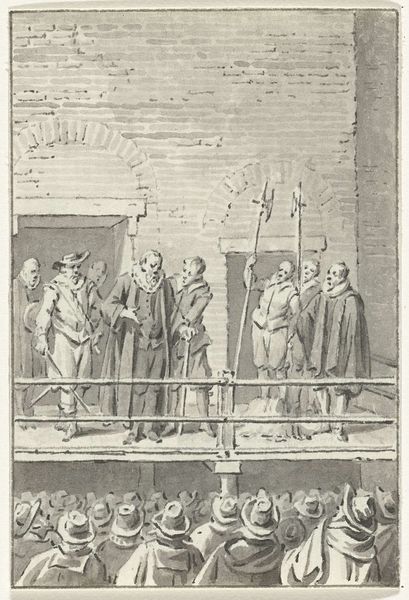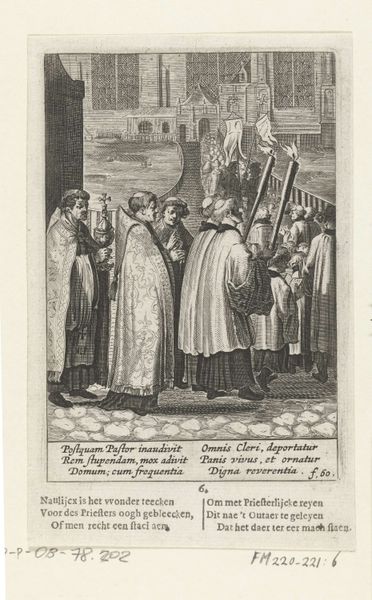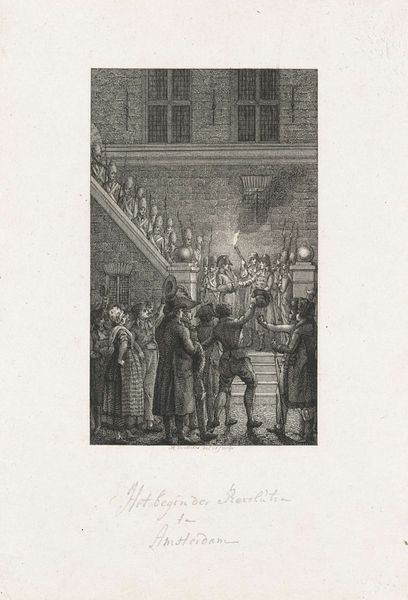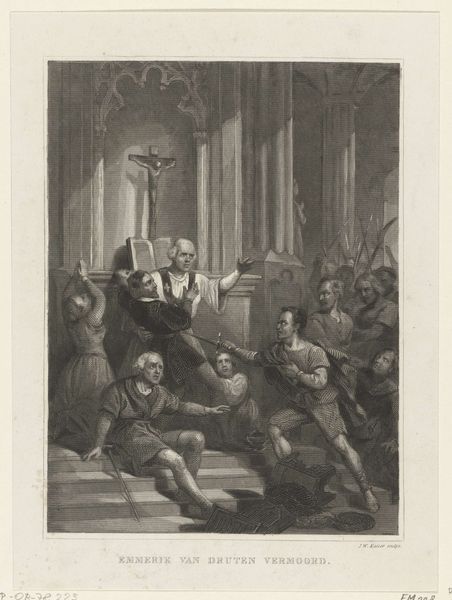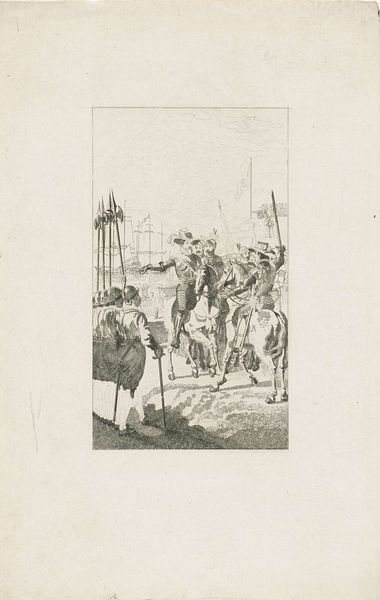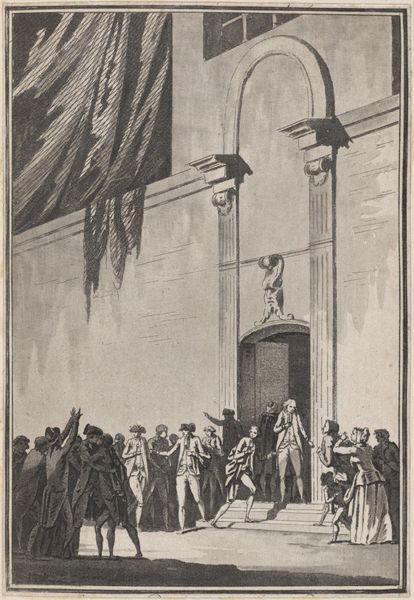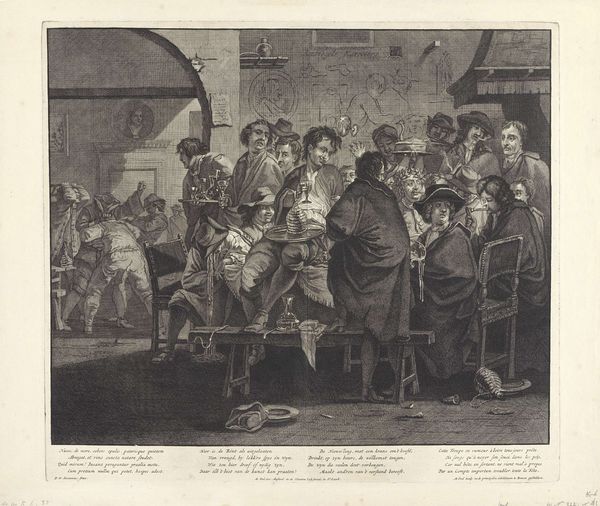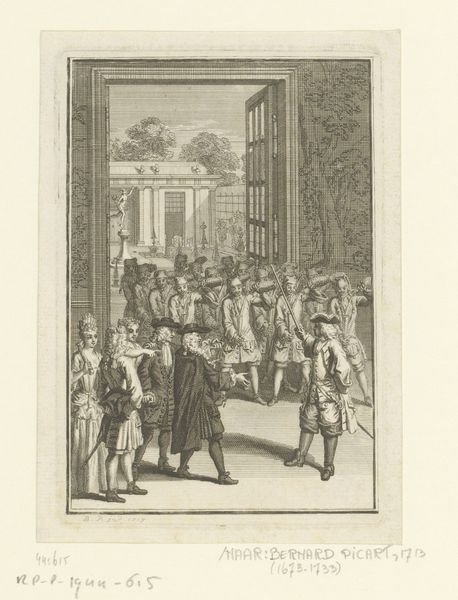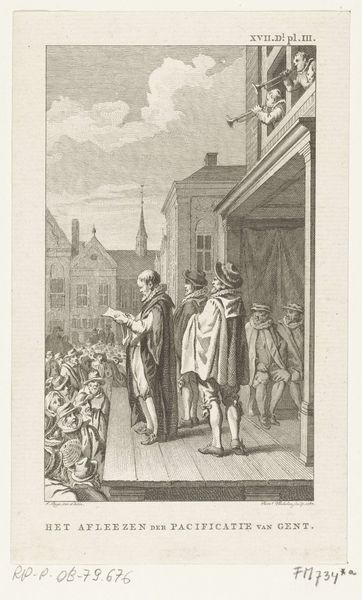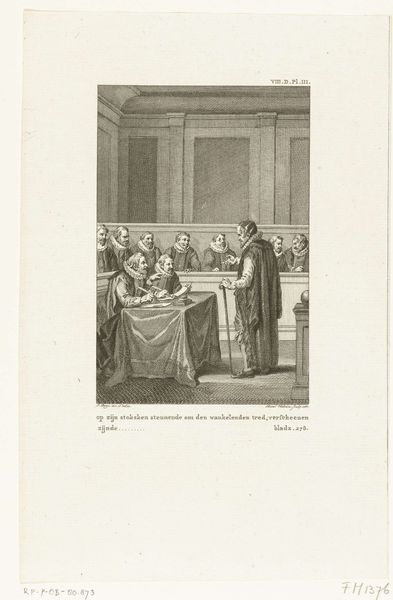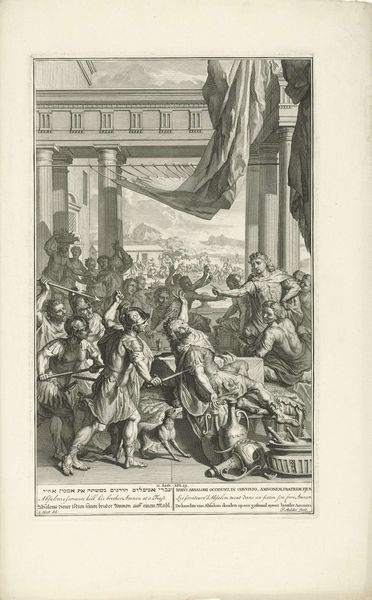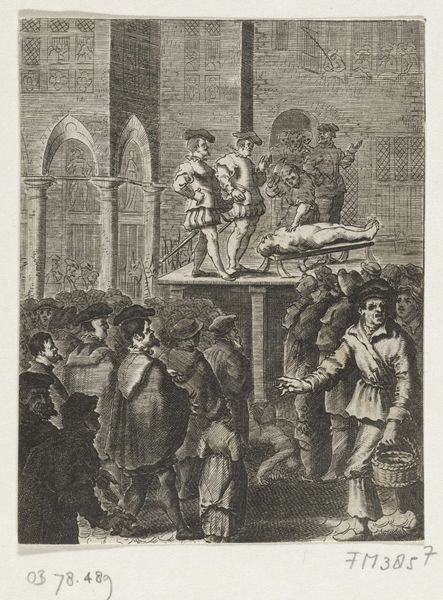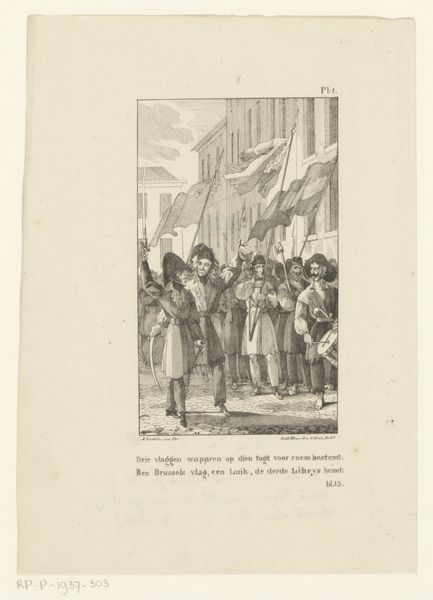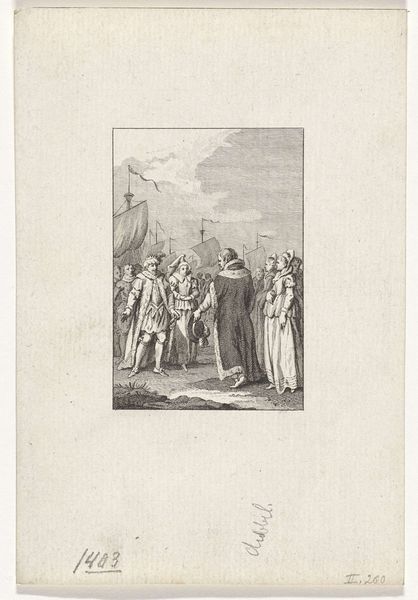
Johan van Oldenbarnevelt op het schavot vóór zijn executie, 1619 1780 - 1795
0:00
0:00
reiniervinkeles
Rijksmuseum
print, engraving
#
portrait
#
dutch-golden-age
# print
#
history-painting
#
engraving
Dimensions: height 106 mm, width 72 mm
Copyright: Rijks Museum: Open Domain
Reinier Vinkeles made this etching of Johan van Oldenbarnevelt's execution in the Netherlands sometime between his birth in 1741 and death in 1816. But the scene depicts an event that took place in 1619. This recalls a major moment in Dutch history, and points to how later generations interpreted that event. The print shows Oldenbarnevelt, a leading statesman, on the scaffold just before his execution. The somber scene includes onlookers and guards. The image creates meaning through its stark depiction of power and mortality. The etching was produced over a century after the event, during a time of shifting political and social values in the Netherlands. By the late 18th century, the Dutch Republic was in decline, and there was growing dissatisfaction with the ruling elite. The print subtly critiques the exercise of state power, tapping into contemporary debates about justice, authority, and historical memory. To understand this piece more fully, we can look to pamphlets, political tracts, and other visual representations from both the 17th and 18th centuries. The meaning of art, like that of history itself, is always contingent on its social and institutional context.
Comments
No comments
Be the first to comment and join the conversation on the ultimate creative platform.
